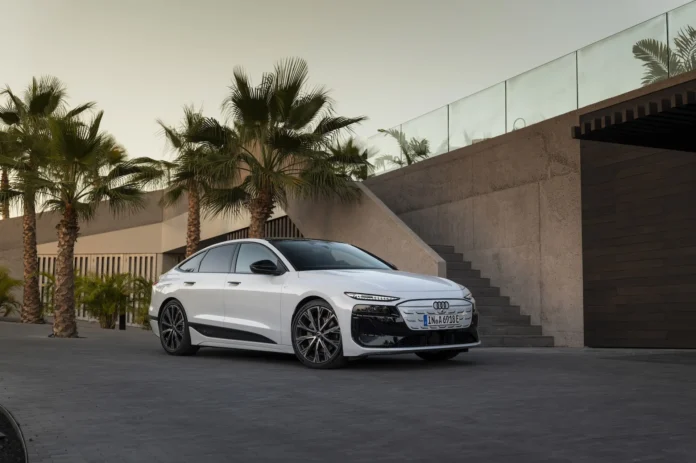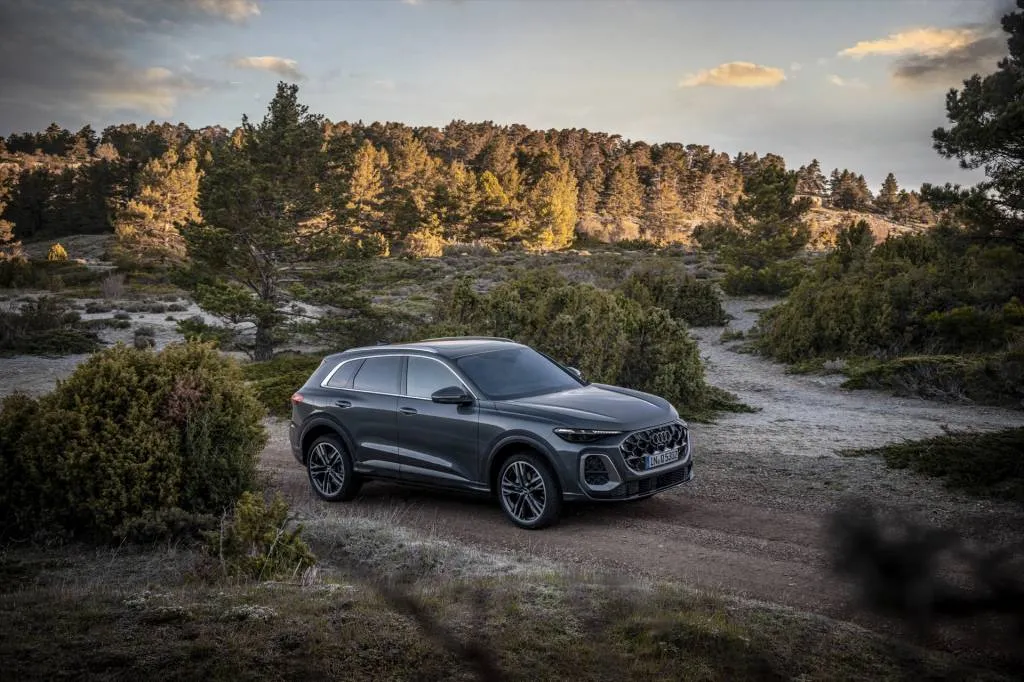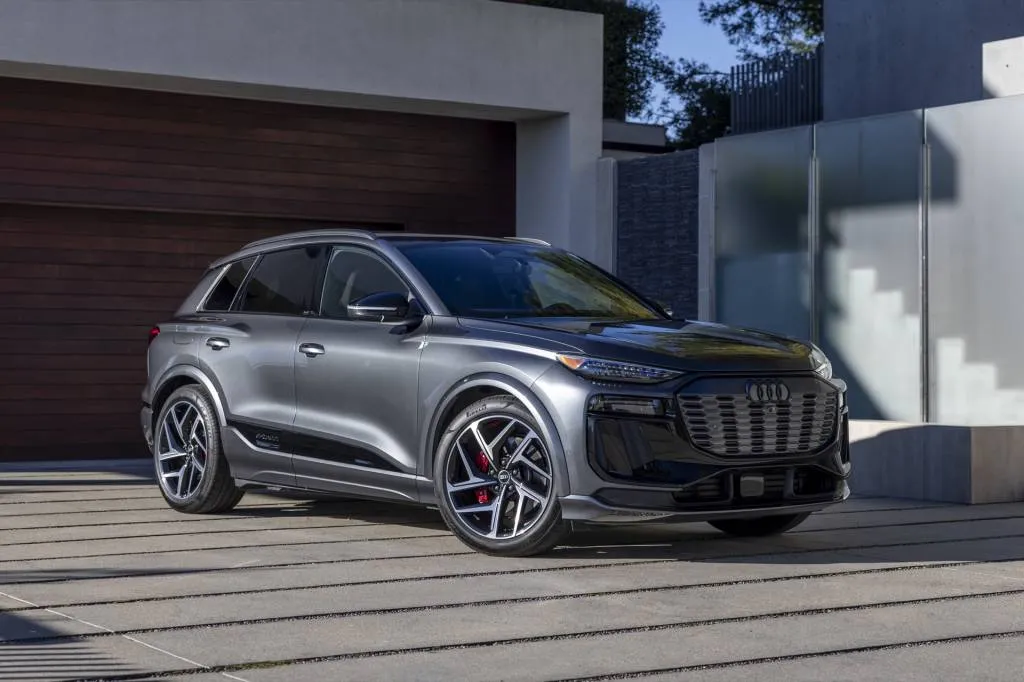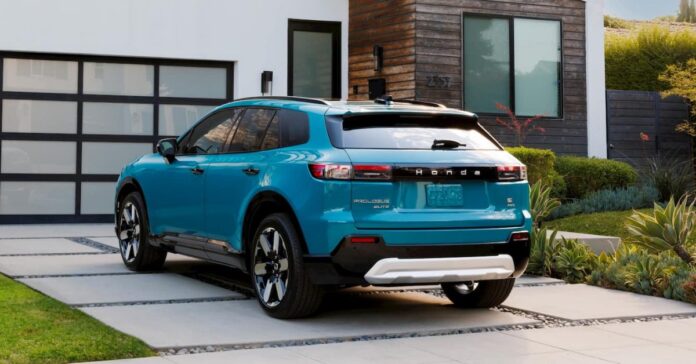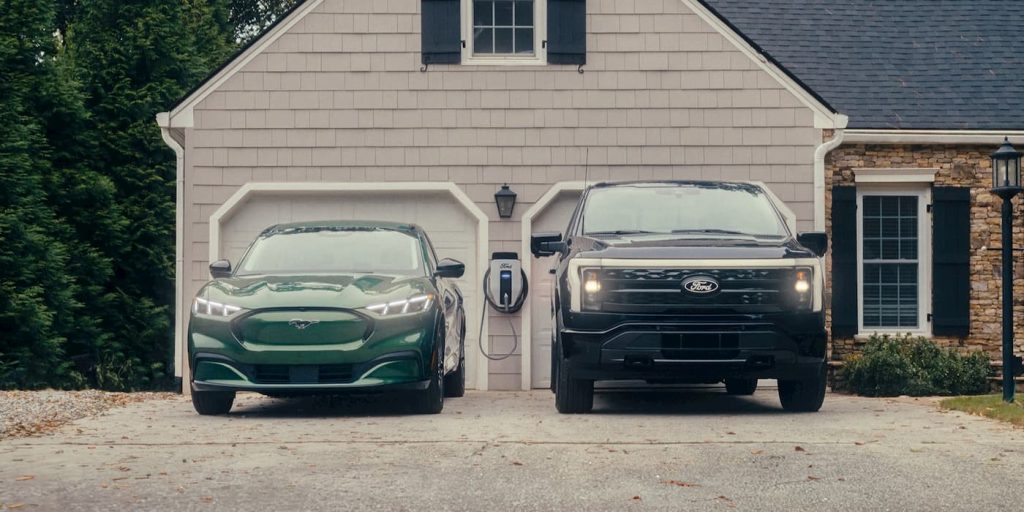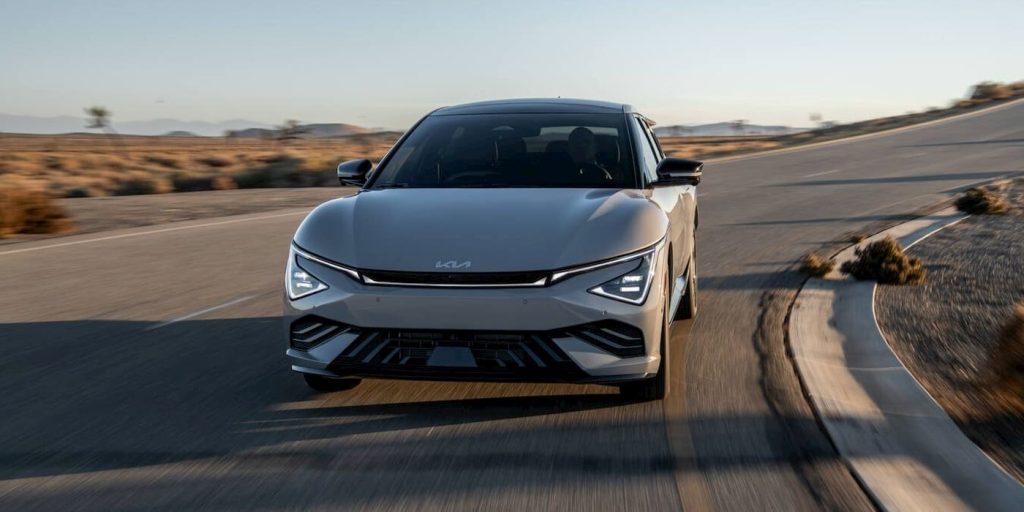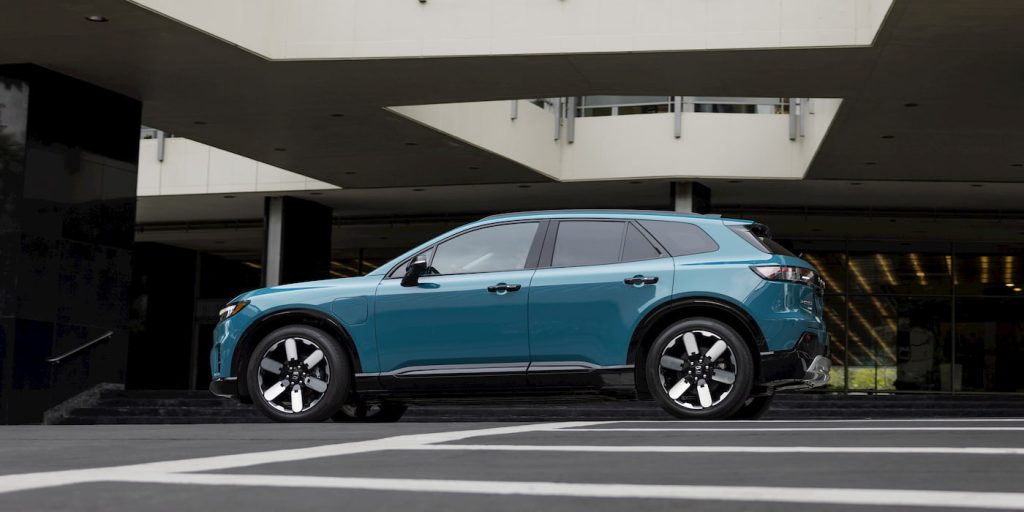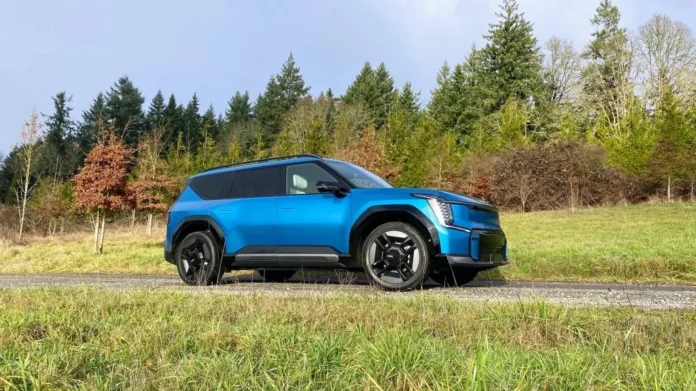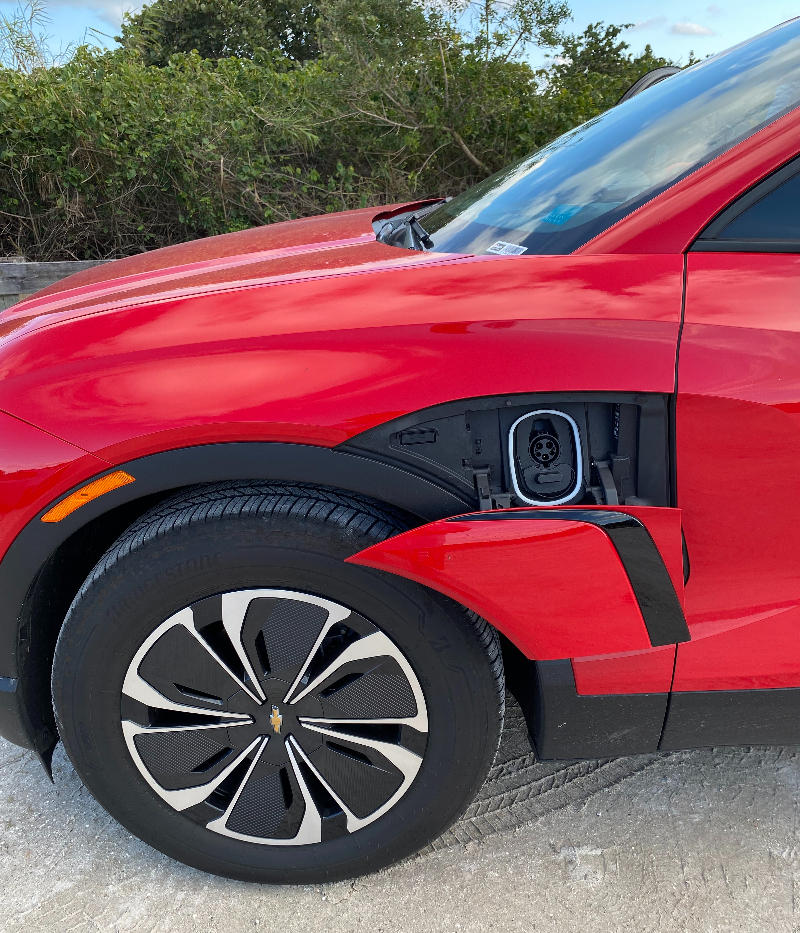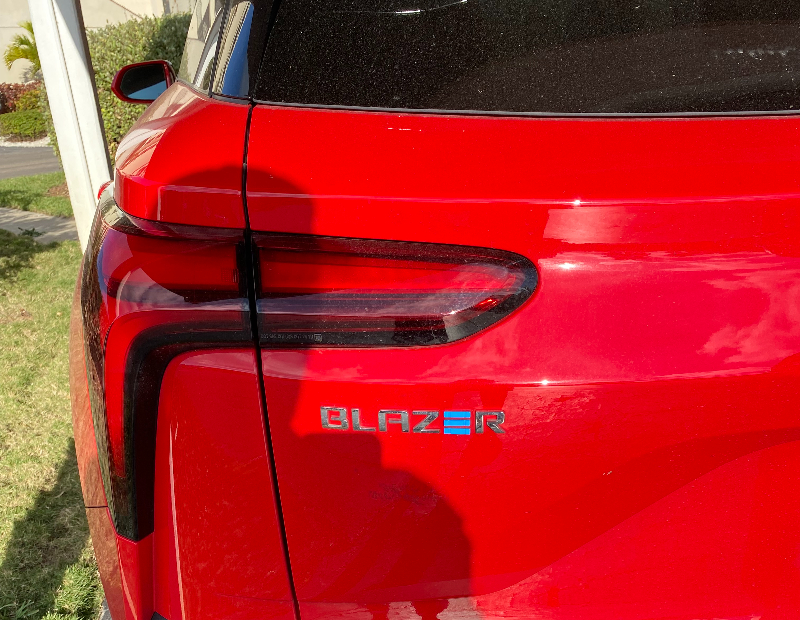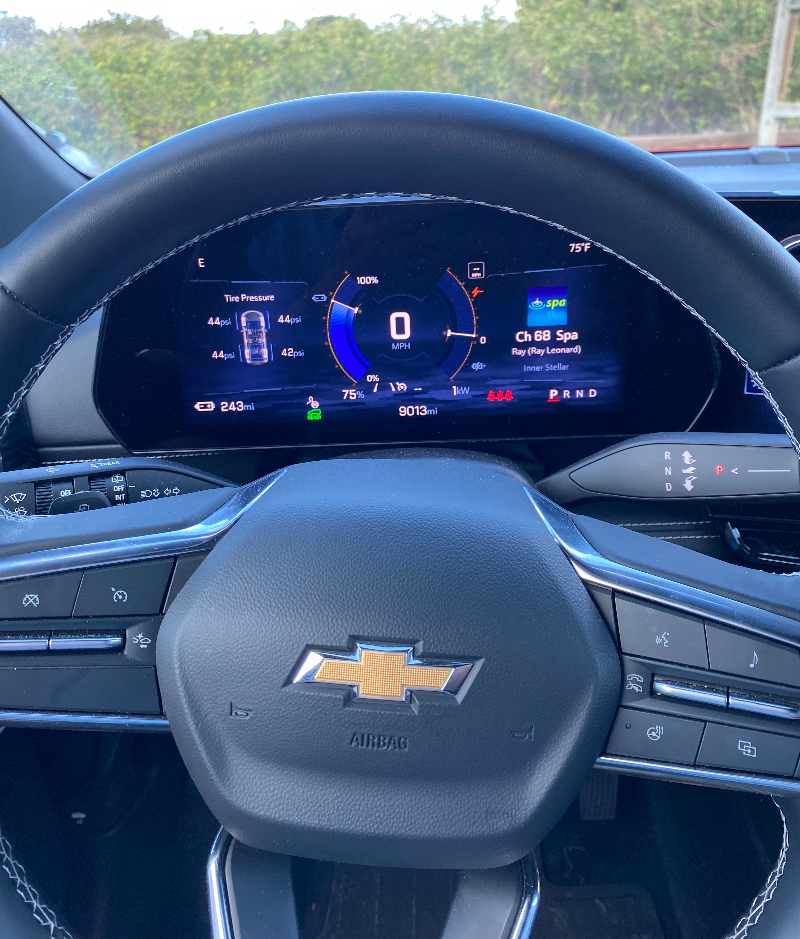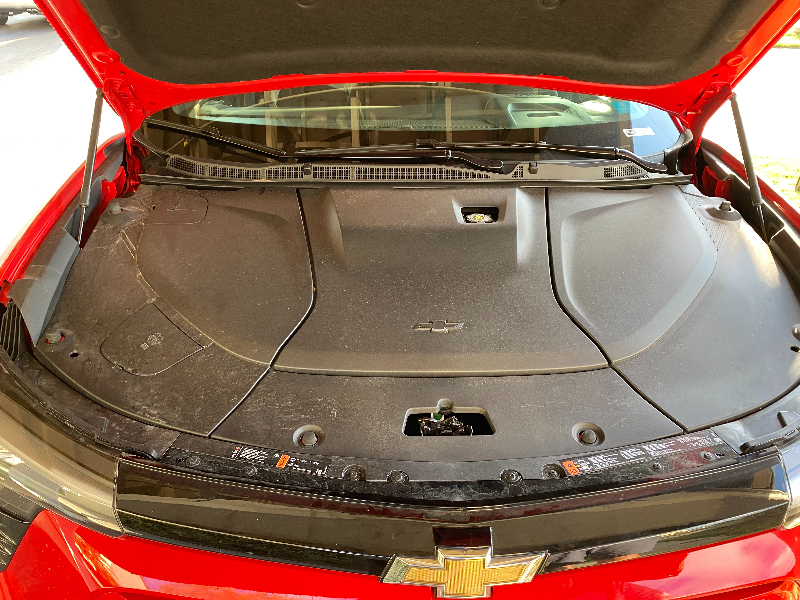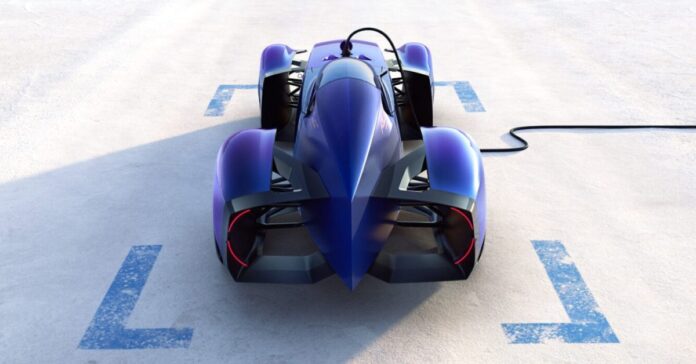
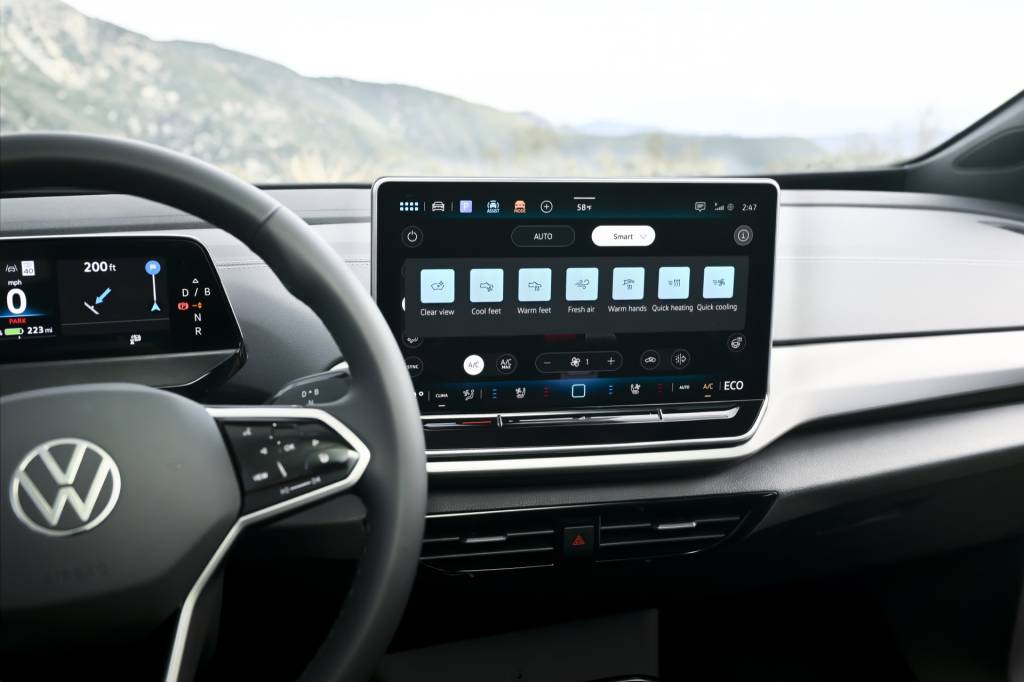

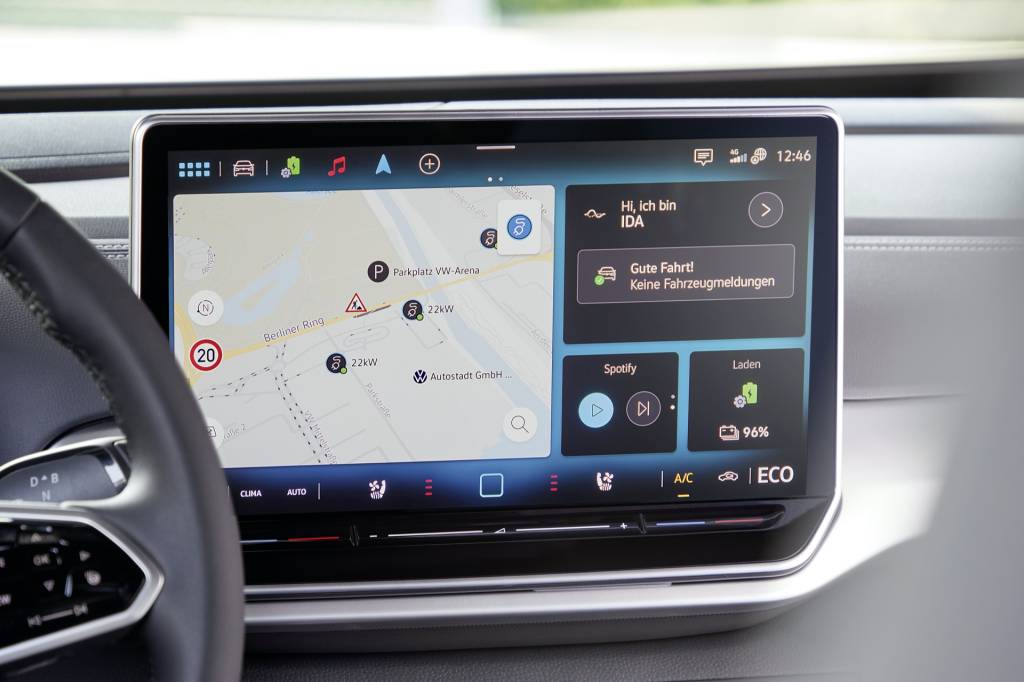
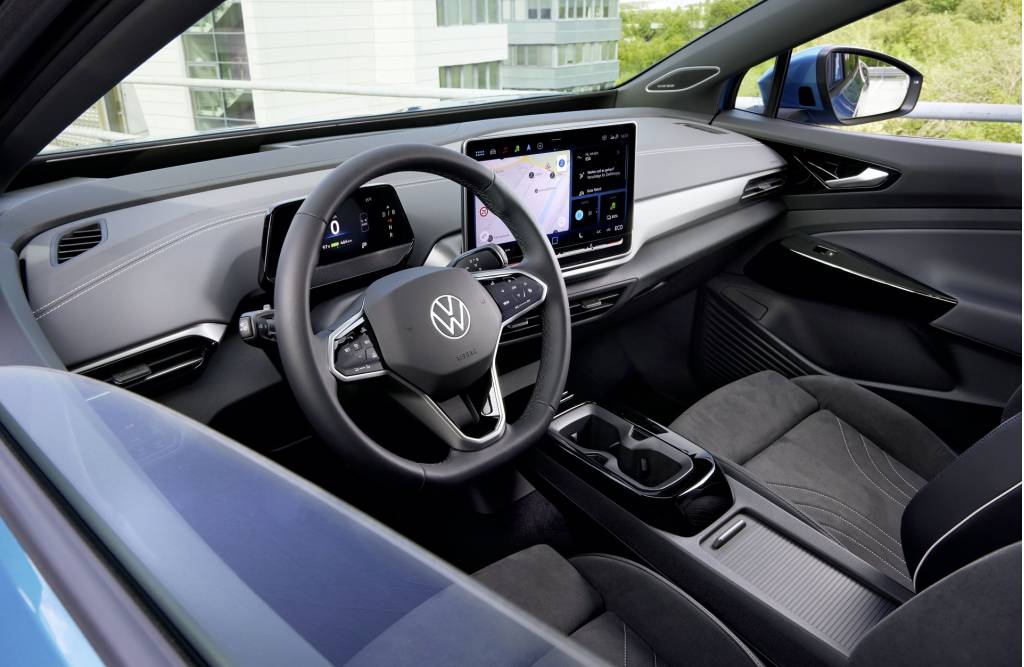
- 2025 ID.4 with 82-kwh battery and 291-mile range starts at $46,520
- VW promises “additional content” midyear; unclear if that’s in addition to NACS adapter
- Base 62-kwh versions haven’t been priced, will come later
Volkswagen has put a price on some, but not all, U.S. versions of its 2025 VW ID.4 electric vehicle lineup ahead of their expected arrival at dealerships in February.
The 2025 ID.4 will be offered once again in a total of seven trims. ID.4 models with the larger 82-kwh (77 kwh usable) battery pack start at $46,520 in single-motor rear-wheel-drive form (including the $1,425 destination charge) or $50,420 in all-wheel-drive form. For the former, that’s $220 more than the equivalent 2024 model. This is for the 2025 VW ID.4 Pro, which continues to offer an extensive range of features, such as heated seats, heated washer nozzles, heated mirrors, a heated windshield (AWD models), dual-zone climate control, ambient lighting, 45-watt USB-C charging, and an extensive suite of active-safety tech.
Pro S versions of the ID.4 with RWD add adaptive front lighting, perforated cooled front seats, a panoramic moonroof, a power tailgate, and 20-inch wheels, and it starts at $51,620, while the AWD Pro S version costs $55,520. Top S Plus versions are only offered in AWD form and cost $58,720, adding 14-speaker premium audio, heated rear seats, an overhead-view camera system, 21-inch wheels, upgraded trims, and more.
That leaves base-battery versions of the 2025 VW ID.4 with the 62-kwh (58 kwh usable) battery pack without a price, as of yet. For 2024 those versions started at $41,160 and were only offered with rear-wheel drive, keeping the 201-hp rear motor unit formerly used throughout the lineup.
The ID.4 has a CCS port, but it has said that its vehicles will obtain Tesla Supercharger access with a NACS adapter starting in June or July. Volkswagen noted with Monday’s update that those base-battery versions will have “later availability,” while all models will get “additional content starting midyear,” with details and pricing to come later, so it’s unclear if these two points are related.
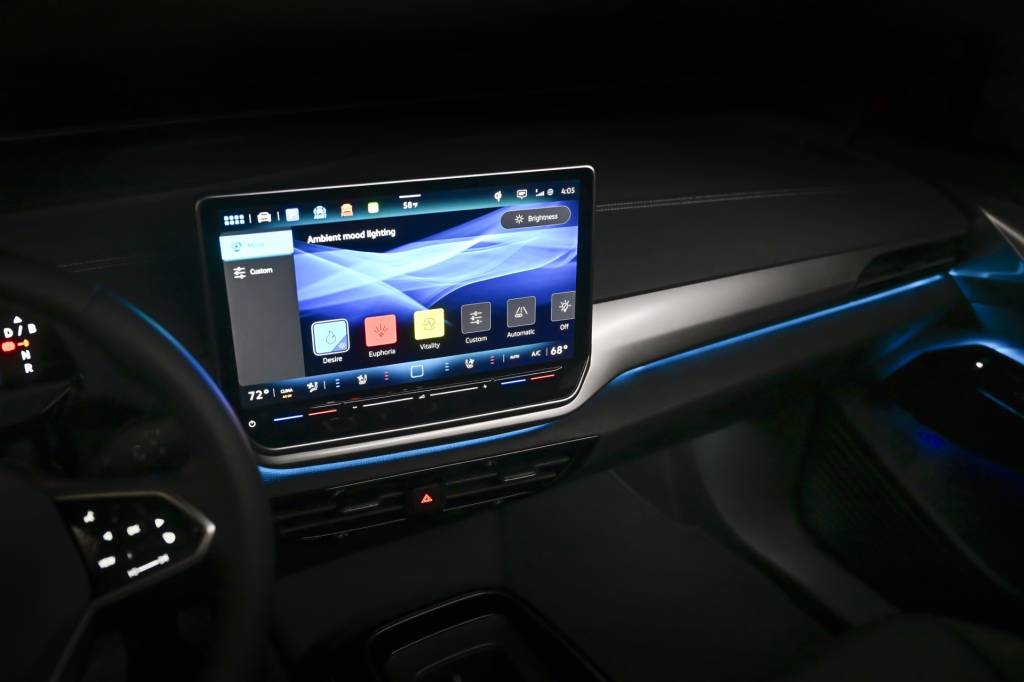
2024 Volkswagen ID.4

2024 Volkswagen ID.4

2024 Volkswagen ID.4
VW confirmed last June that for 2025, even base versions of the ID.4 with the 62-kwh battery pack will get a 12.9-inch infotainment system with a revamped interface that cures, from what we could see in a first drive of the 2024 VW ID.4, nearly all of the interface ills of the ID.4 as it was initially launched. It keeps its Apple CarPlay and Android Auto compatibility, but it adds improved processing hardware to get rid of the latency, a tray of shortcuts, and climate functions that “stick” to the bottom of the screen. Supporting haptic sliders are now backlit and no longer laggy.
VW confirmed last June that the 2025 ID.4 would be carried over essentially unchanged from 2024, and it’s supplemented with a ChatGPT-based voice assistant. In a first experience with that voice interface, what VW is doing with or without the help of AI was not clearly differentiated. The automaker at that time emphasized only that no app or activation is required, and “if the request cannot be answered by the Volkswagen system, it is forwarded anonymously to AI and the familiar Volkswagen voice responds.”

2024 Volkswagen ID.4

2024 Volkswagen ID.4

2024 Volkswagen ID.4
VW has underscored, thankfully, that ChatGPT and the integration partner Cerence don’t gain access to vehicle data, and questions and answers are “deleted immediately to ensure the highest possible level of data protection.” At that time VW said that the new voice assistant could help answer general-knowledge questions, but in a CES demo Green Car Reports didn’t find it any easier than a Google search—or any more competent than Siri, which presents a low bar.
As with the extensively revamped 2024 models, which arrived earlier this calendar year, the vast majority of the 2025 Volkswagen ID.4 lineup offers a punchier permanent-magnet rear motor unit allowing 282 hp in single-motor rear-wheel-drive form, or 335 hp in dual-motor all-wheel-drive form that includes a smaller induction motor in front. Meanwhile VW boosted ID.4 EPA range ratings to 263 miles for AWD versions or up to 291 miles for the single-motor version, both with the larger 82-kwh (77-kwh usable) battery pack.
VW ID.4 sales were down significantly in 2024, initially due to a slight delay before the refreshed model and then due to the recall and stop-sale of 2021-2024 ID.4 models—nearly 100,000 vehicles—due to defective door handles. Deliveries resumed last month and production restarted at its Chattanooga, Tenn., assembly plant.
As of yet, the 2025 VW ID.4 faces yet another hurdle: It’s not yet listed as qualifying for the $7,500 EV tax credit, which is at the time of writing still valid. With the clock potentially ticking on that piece of policy, and VW faced with a glut of 2024 models it needs to move out from the stop-sale, expect discounts on those much-improved 2024 ID.4s as we wait to get the full 2025 picture on this EV model line.
Source link by Green Car Reports
Author news@greencarreports.com (Bengt Halvorson)
#ID.4 #costs #features #due #midyear





